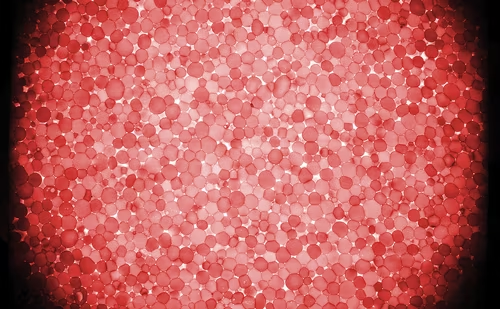Sexual medicine is a rapidly evolving discipline that embraces the study, diagnosis, and treatment of sexual health concerns in men and women.1 Data from multiple population-based epidemiologic studies estimate that approximately half of men and women will experience some sexual problems.2,3 Based on data and well recognized psychologic and biologic burdens associated with sexual health, the role of sexual medicine will inevitably expand in medical healthcare management, research, and education.2,3 Multidisciplinary organizations dedicated to advancing the prac
Sexual medicine is a rapidly evolving discipline that embraces the study, diagnosis, and treatment of sexual health concerns in men and women.1 Data from multiple population-based epidemiologic studies estimate that approximately half of men and women will experience some sexual problems.2,3 Based on data and well recognized psychologic and biologic burdens associated with sexual health, the role of sexual medicine will inevitably expand in medical healthcare management, research, and education.2,3 Multidisciplinary organizations dedicated to advancing the practice of sexual medicine, include the American Urological Association (AUA), the International Society for Sexual Medicine (ISSM), and the International Society for the Study of Women’s Sexual Health (ISSWSH).
The goal of healthcare practitioners should be to provide their patients with optimal sexual healthcare through safe and effective evidence-based management strategies. For this reason, a holistic, multidimensional approach should be applied to each patient and his/her partner to address associated physical, mental, and social (or relationship) concerns. This article reviews evidence-based data concerning the efficacy and safety of oral selective phosphodiesterase type-5 (PDE5) inhibitors for treating men with erectile dysfunction (ED), which is commonly associated with co-morbidities such as diabetes mellitus and hypertension.
Physiologic Penile Erection and Detumescence
During sexual stimulation, smooth muscles in the genital tissues change from the contracted state at baseline (flaccidity) to the relaxed state during arousal (penile erection).4 In addition, penile smooth muscle cells undergo a significant drop in intracellular calcium concentration. Calcium flux out of the cell or into smooth endoplasmic reticulum during sexual stimulation is largely directed by increased cyclic guanosine monophosphate (cGMP). The effect of cGMP-directed decreased intracellular calcium is genital smooth muscle relaxation, erectile tissue engorgement, and penile erection. Given normal conditions, sustained increased levels of intracellular cGMP during sexual stimulation directly correlate with increased penile rigidity during erection.4 Physiologic detumescence is initiated when the level of cGMP is reduced by diminished synthesis (or stopping sexual stimulation) and on-going hydrolysis of cGMP in the catalytic site of the PDE5 enzyme into the inactive 5’ GMP. When intracellular calcium values increase, penile smooth muscle regains baseline contractile tone.4
Erectile Dysfunction and PDE5 Inhibitors
ED affects up to 30 million men in the US and more than 150 million men worldwide.5–7 The etiology of ED is specific to each patient and may be vasculogenic, psychogenic, neurogenic, hormonal, drug-induced, or related to other systemic diseases.8–9 Because endothelial dysfunction is common in ED and other co-morbidities, such as diabetes mellitus and coronary artery disease (CAD), ED is a marker for underlying co-morbid disease.10,11 According to a national database of managed care health plans that included 270,000 men diagnosed with ED, approximately 70% had one or more of the following co-morbidities:
- diabetes mellitus (20.2%);
- hypertension (11.1%);
- hyperlipidemia (42.4%); and/or
- depression (11.1%).12
Pharmacologically maximizing intracellular levels of cGMP in men with ED is a successful strategy to improve erectile performance and sexual intercourse. It also maximally lowers intracellular calcium and thereby maximizes genital tissue smooth muscle relaxation and penile engorgement.13
Oral PDE5 inhibitors, such as vardenafil, tadalafil, and sildenafil, are a class of vasodilators that competitively inhibit the catalytic sites of the PDE5 enzyme that maximize intracellular cGMP levels.13 The AUA ED management guidelines recommend PDE5 inhibitors as first-line therapy unless contraindicated.14 Despite the lack of head-to-head trials, all PDE5 inhibitors have comparable efficacy at maximal therapeutic doses in improving erectile function and share a relatively high overall cardiovascular safety profile.13 In addition, PDE5 inhibitors have similar warnings for concomitant use with alpha-blocker therapy (see Table 1).15–17
Oral PDE5 Inhibitor Therapy—Factors to Consider in Agent Selection
Factors that influence agent selection include clinical practice experience, clinical trial data, and patient preference. Studies of patient preferences for PDE5 inhibitors are presented in Table 2.18–21 To maximize the patient’s sexual healthcare, good medical practice means that healthcare providers should offer both pertinent information about and the equal opportunity to try all of the three PDE5 inhibitors so that the patient can select the one most helpful to them, because there are subtle and important differences among the three PDE5 inhibitors. In a study of patient preferences, criteria such as age, ED pathophysiology, and ED severity did predict patients’ choices in PDE5 inhibitors in a large popultation.22 In an individual patient, however, the lack of predictability emphasizes that the patient, in conjunction with the healthcare provider, determines the PDE5 inhibitor most suitable to them.
Evidence-based Differences Between PDE 5 Inhibitors
Evidence-based differences among the three PDE5 inhibitors may include biochemical potency, time of onset, duration of action, and first-time (dose/attempt) and/or subsequent successful intercourse rates. In addition, the cumulative probability of first effect in men with associated co-morbidities, partner benefits, and safety profile also are important.
Biochemical Potency
There are evidence-based differences in biochemical potency among vardenafil, tadalafil, and sildenafil.23 In a National Institutes of Health (NIH)-funded laboratory investigation by Blount and colleagues, the biochemical potency of vardenafil was significantly higher than either sildenafil or tadalafil. The IC50, the concentration of a PDE5 inhibitor that inhibits PDE5 enzyme activity by 50%, for vardenafil was 0.09nM. The IC50 for tadalafil required twice the vardenafil concentration (1.8nM), and the IC50 for sildenafil required more than four times the vardenfil concentration (3.7nM).The clinical significance of these in vitro data,however, are not fully elucidated, but are likely expressed in time of onset, duration of action, probability of first-dose effect and efficacy at halfmaximal dose.
First- time (Dose/ Attempt) and/or Subsequent Successful Intercourse Rates and Cumulative Probability of First Effect
Evidence-based differences were monitored between PDE5 inhibitors in first-time (dose/attempt) and/or subsequent successful intercourse rates in men with ED and co-morbidities including diabetes24–29 and hypertension30–32, and cumulative probability of first effect (see Table 3).33–35When all factors are considered, including percentages of co-morbidities, ED severity, and successful intercourse rates with placebo, vardenafil, due to its higher biochemical potency, may have an advantage in enhancing erectile performance, but head-to-head studies are not available. Because repeated failure to achieve an erection can frustrate patients and prompt withdrawal from PDE5 inhibitor therapy, first-time success is important. First-time success also should be complemented by sustained efficacy in improving erectile function with long-term PDE5 inhibitor use. A two-year study by Stief and colleagues showed that vardenafil 10mg and 20mg resulted in success rates of 92% and 94%, respectively, for the sexual encounter profile (SEP)2 and 87% and 89%,respectively, for SEP3 at the last observation carried forward.36 A sildenafil study with a one- to threeyear follow up in which 82% and 90% of patients received vardenafil 50mg and 100mg, respectively, as a first dose showed that 72% of treated patients sometimes or always achieved vaginal penetration. A similar percentage of patients experienced slight difficulty or no difficulty in maintaining sexual intercourse.37
Efficacy data in specific ED co-morbid patient populations, such as patients with diabetes, also influences data on first-time treatment success. For example, success rates for the sexual encounter profile SEP2 and SEP3 were compared in two vardenafil and tadalafil diabetes trials.There were differences in study design, baseline ED severity, and glycosylated hemoglobin A1C values.24–27 Treatment with a PDE5 inhibitor, such as vardenafil, significantly improved erectile function at each level of baseline ED severity, regardless of glycemic control, in a trial of patients with severe diabetes, more than half of whom had severe ED at baseline and/or poor glycemic control.24 Although the effects of PDE5 inhibitor therapy on A1C levels have not been a primary outcome in diabetes trials, there are limited data from at least two studies. In a study by Ziegler and colleagues, A1C levels declined (vardenafil baseline 7.7% and end-point 74% versus placebo baseline 7.6% and end-point 7.4%).25 In a study by Saenz de Tejada and colleagues, A1C levels did not significantly change from baseline to end-point (-0.2% versus 0% in the placebo group; p=0.083).26
Time of Onset
There are evidence-based differences among PDE5 inhibitors in time of onset that partly result from biochemical potency differences.38–40 In prospective, randomized, double-blind, placebo controlled clinical studies, vardenafil 10mg has a 10-minute onset,41 sildenafil 100mg has a 10- to 14-minute onset,42 and tadalafil 10mg and 20mg begins working within 30 minutes.43
Duration of Action
The duration of action of a drug is partly related to its pharmacokinetic profile, especially the half-life of the drug. Duration of action is also based partly on the biochemical potency. Evidence-based differences between PDE5 inhibitors in half-life are 17 hours for tadalafil and approximately four hours for vardenafil and sildenafil.15–17,23
In several prospective double-blind placebo-controlled studies using successful intercourse as the outcome, a duration of action of up to 36 hours for tadalafil was shown in some patients.16,44 In a separate prospective double-blind placebo-controlled stopwatch study using successful intercourse as an outcome, men with ED had a 70% successful intercourse rate at eight to 10 hours after taking flexible-dose vardenafil compared with 34% in patients treated with placebo. The duration of action for vardenafil (eight to 10 hours) beyond its half-life of four hours may result from its slow dissociation from the PDE5 enzyme.45 A study by Blount and colleagues using radiolabeled PDE5 inhibitors showed that vardenafil has a significantly slower dissociation from the PDE5 enzyme compared with tadalfil and sildenafil, respectively.23 Consistent with its slow dissociation, vardenafil also exhibits a relatively high 10:1 ratio between intracellular and extracellular concentration in rat aorta cells, based on a personal communication from Dr Corbin.
Data Concerning Partner Benefit
There are evidence-based differences among the PDE5 inhibitors in partner benefits. In a randomized doubleblind comparison of vardenafil with placebo in 293 heterosexual couples including treated males with ED >6 months and untreated female partners, vardenafil significantly increased scores in intercourse satisfaction, total female sexual function and desire, subjective arousal, lubrication, orgasm, and satisfaction domain scores in untreated female partners.46 Heiman and colleagues reported changes in sexual function and satisfaction in women whose male partners with ED were treated with sildenafil.47 No differences, however, were observed between sildenafil and placebo in sexual desire, arousal, pain, orgasm, and partner satisfaction Female Sexual Function Index (FSFI) domains (n=180).
Safety Profile
According to clinical trial data, there is no association between PDE5 inhibitor use and increased cardiac morbidity or mortality.48,49 Although cases of non-arteritic anterior ischemic optic neuropathy (NAION) have been reported in patients taking PDE5 inhibitors, they are rare—38 cases with sildenafil, four cases with tadalafil, and one case with vardenafil. It is premature to determine a causal relationship between NAION and PDE5 inhibitors.15,16,25,50 The most commonly reported adverse events with the PDE5 inhibitors include headache, flushing, rhinitis, dyspepsia, and back pain.15–17 The three drugs express the different side effects differently (e.g. dyspepsia is unusual in vardenafil while back pain is more common in tadalafil)
Conclusion
Evidence-based efficacy and safety data reported in men with ED and its associated co-morbidities suggest PDE5 inhibitors are the recommended first-line therapy for ED. In selecting an appropriate agent, physicians and their patients must partner together. Patients need to be given the opportunity to try all three PDE5 inhibitors in order to determine the correct one, as there are important and subtle differences among them. Healthcare providers and patients must consider efficacy data in specific subgroup patient populations and factors that influence agent selection. Subtle differences between the PDE5 inhibitors and benefits to female partners are emerging.■







